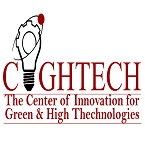Theme: Waste reduction and Recycling for Greenery planet
RECYCLING SUMMIT 2023
Conference Series LLC LTD publishes 1000+ Open Access journals with over 70000 eminent personalities, renowned scientists as editorial board members, 1200 Symposium & Workshops, and 5 million followers. Conference Series LLC LTD organizes 1000+ Conferences every year across USA, Europe & Asia with support from 1000 more scientific societies. All participants from all around the world are invited to the "18th World Convention on Waste Recycling and Reuse" according to Conference Series Ltd.
The "18th World Convention on Waste Recycling and Reuse” will take place in Singapore city, Singapore on June 26–27, 2023. The conference will feature timely keynote presentations, oral talks, poster presentations, and exhibitions.
The main focus of the 18th World Convention on Waste Recycling and Reuse is “Waste Reduction and Recycling for Greenery Planet ". The world's top Environment science researchers, scientists, and academics are all cordially invited to the convention. We give students and young researchers a venue where they can present their research orally in order to lay the groundwork for future collaborations.
Why to attend ?
The conference will serve as a forum for the discussion of future difficulties in the adoption and use of reducing technologies and advancements in this field as well as the exchange of recent research findings among researchers from around the globe. The largest group of participants from around the world are gathered here, and with members from all over the world interested in learning about recycling and waste Reuse, this is your best chance to connect with them. At this two-day event, you can perform demos, hand out information, engage with current and potential clients, make a splash with a new product line, and gain name recognition.
Target Audience
- Ecologists
- Green Energy Training Institutes
- Chemical Engineers
- Environmental Engineers
- Waste Management Associations
- Environmentalist
- Research Scientists
- Recycling Industries
- Recycling Researchers
- Business Entrepreneurs
- Environmental Academia’s
Track 01 : Recycling
Recycling is the process of changing debris into new materials and products. Usually associated with this concept is the recovery of energy from waste materials. In order for a fabric to be recycled, it must be able to regain the qualities it had in its initial state. It is an alternative to "traditional" trash disposal that helps reduce greenhouse gas emissions while somehow saving resources. By reducing the consumption of current raw materials and preventing the waste of potentially useful materials, it could decrease energy consumption, pollution (from incineration), and pollution (from landfilling).
Various types of glass, paper, cardboard, metal, plastic, tyres, textiles, batteries, and electronics are examples of useful materials. Recycling also includes the composting and alternative uses of perishable waste, including food and garden waste. Delivered to a unit utilisation centre or collected from waste bins, recyclable items are sorted, cleaned, and recycled into new materials to create new goods.
Track 02 : Reduce /Reuse / Recycle /Rediscovery
Reduce : This involves a determined decrease in the number of plastics that an individual uses on a daily basis.
Reuse : Reuse is the process of utilising something again, whether for the first time (traditional reuse) or to serve a different purpose.
Recycle : The accumulation of waste, its production or conversion into new goods, as well as the acquisition of these items, which can subsequently be reused themselves, are the important steps in recycling. Reusing can help reduce the quantity of durable waste that accumulates in landfills, which have become increasingly expensive.
Rediscovery : This places emphasis on using existing options rather than plastic instead of searching for new ones. When compared to producing identical items from virgin resources, collecting things from recycle materials uses less energy and produces less contamination.
Track 03 : Biomass and Bioenergy
Any fundamental element that relies on sunlight for its component necessity is referred to as biomass. Compared to reproducing coal, biomass essentialness emits more carbon. It could combine wood, wood scraps, straw, fertilizer, sugarcane, and other different products from growing processes as fuel. Biomass conversion to biofuel can be accomplished by a variety of processes that are broadly categorized as thermal, manufactured, and biochemical techniques. One practical kind of bioenergy is biofuel, which is derived from common resources. The use of affordable energy sources, such as agricultural and routine wastes, as well as the utilisation of natural energy sources, such as sunlight, as alternative energy sources is accomplished through the use of biomass and bioenergy.
Track 04 : Food And Catering Waste Recycle
Food waste and catering waste are materials that have been used for food, such as leftover food, cooking oil, and so forth in cafés, catering companies, and also at homes. The biggest concern is about extraordinary food that will go to waste when it may be reused to create elective energy assets. Natural ingredients are used in cooking, which makes them biofuels. Reusing waste materials makes excellent compost for plants. Kitchen waste from homes is commonly used as nursery compost in several countries. Similar to how few measures for green reuse that improves the environment, such as using reusing holders, food waste collection management, kitchen caddy, etc., are practised in certain countries.
Track 05 : Chemical Waste Recycling
A pure synthetic compound is an artificial material created using a certain combination of molecules or particles. In any case, a synthetic construction is created when two components are combined into one substance through a synthetic reaction. Although not all substances are blended, all blends are substances. Removal of substances is a big problem because they include dangerous substances. This consider the reuse of safe synthetic substances, such as those used in medical research and other non-restorative activities.
Track 06 : Plastic Waste Recycling
Plastic is a material made up of a wide range of designed or semi-produced characteristic irregularities that may be moulded into solid materials as they are adaptable. Plastics' apparent pollution-causing qualities are attributed to their strength and modest size, which leads to abnormally high levels of personal plastic use. Due to its non-biodegradability, it affects the land, streams, and oceans. Reusing plastic is one way to this critical challenge. Similar to all this, a wide variety of plans have been developed to dispose of the executives of plastic. In many countries, there is little knowledge about how to remove plastic waste. Utilizing reuse containers effectively prevents the contaminating effects of plastic waste on the environment.
Track 07 : Paper Recycling
Paper recycling refers to techniques for processing used paper to be used again. Paper scraps from measuring devices, stacked paper products, and wastepaper materials thrown after customer usage are all sources of paper waste. Old news papers and magazines are examples of resources that are commonly reused. Prior to the approach, it is usual to assess the suitability of reusing various designs, comprising collapsed, wrapping, and packing materials among other types of paper.
Paper recycling plants take the papers from the garbage regions and ship them away. One of the materials with sufficient reusability is paper. Paper that has been manufactured from recently used and recovered paper and paper-related materials is known as recycled paper. For the purpose of reuse, people must spend as much time as necessary adding the paper items. Starting with us, we can recycle paper. To make it profitable, we must all work together and exert ourselves.
Track 08 : Rubber Recycling
Tire reuse, also known as versatile reuse, is a method for repurposing discarded tyres that are no longer suitable for use on cars due to wear or irreparable wrongdoing. These tyres are a hazardous source of garbage due to the large amount produced, the durability of the tyres, and the presence of potentially dangerous tyre pieces. They can increase regarded space in since they are very solid and non-biodegradable.
Track 09 : E –Waste Recycling
Based on the presence of a number of toxic wastes that can pollute the environment and have a negative impact on human health, e-waste is one of the defilement issues that is generally growing more quickly. E-Waste, also known as Waste Electrical and Electronic Equipment (WEEE), is the name given to outdated, no longer functional, or discarded electrical devices. It includes PCs, client devices, coolers, etc. that their loyal customers have discarded. When you destroy an outdated computer, for example, the electronic component parts may include potentially hazardous materials like lead, cadmium, beryllium, or brominated fire retardants. Reusing and transporting e-waste could pose a serious risk to the health of workers and crowds in countries with an agricultural economy.
Track 10 : Domestic Waste Management
The management of trash from creation to movement is accomplished through waste exchange or waste organisation. Similar to how it combines moving, garbage collection, treatment, and follow the rules. This also aligns with providing guidance on reuse and reusing. All types of garbage are included in executive waste. For instance, agricultural waste, household trash, and so forth The core element of waste management is to reduce the negative impact of waste will have on prosperity and the environment. The management of waste removal is not uniformly streamlined among nations, districts, and regions.
Track 11 : Industrial Waste Recycling
Industrial waste is debris that is produced by a mechanical process that combines any materials that are delivered inertly in the middle of a collection system, such as that of manufacturing plants, businesses, production lines, and mining operations. Engineered solvents, paints, sandpaper, paper products, mechanical results, metals, and radioactive waste are a few examples of industrial waste.
Track 12 : Waste Management Techniques
Waste management techniques are crucial to prevent further harm to the environment and to maintain the cleanliness of the land. Ocean dumping, sanitary landfills, incineration, recycling, and composting are common waste management techniques. Waste management structures include recovery and recycling efforts, mechanical misuse management, resource recovery from waste, and mechanical treatment of general waste. In one way or another, each of these approaches helps to decrease natural discomfort. They also have a number of intriguing and important objectives. Reuse is the most effective waste management strategy currently available.
Track 13 : Solid Waste Management
Solid waste management is the social activity of managing and discarding solid garbage that is destroyed because it has served its purpose Solid waste management is the social activity of managing and discarding solid garbage that is destroyed because it has served its purpose or is infrequently used again. Unsanitary conditions brought on by the unsightly exchange of municipal solid trash can lead to scenes of vector-borne disease, or illnesses spread by rats and other ominous-looking insects, which can contaminate the environment. The activities involved in solid waste organization create complex, unique difficulties. They also cover a broad range of social, financial, and legal issues that need to be handled and respected.
Track 14 : Waste and Biomass Valorization
Economic and social factors encouraged the direct use of garbage and residues. Many valorisation methods are currently shown potential in satisfying industrial demands. The process of treating waste for (landfill) disposal, storage, and occasionally sorting is known as "biomass valorization." Many valorisation methods are currently shown potential in satisfying industrial demands. because of the diminishing supply of natural resources, rising levels of greenhouse gases, and awareness of the need for non-virgin biomass Utilizing agricultural waste to produce bioethanol.
Track 15 : Renewable Resources and Biogas production
Biodegradable pollution is a type of physical pollution that can choke rivers or canals as they fall below the level of gravity. It incorporates screening to draw in solid materials and gravity-based deposit to remove suspended solids. Biogas, also known as renewable gas, being "renewable" in the sense that people and animals can continue producing garbage, but we don't need to promote producing a lot of trash only for the purpose of producing a lot of biogas.
Track 16 : Microbial Fuel Cell Technology and Metal Recycling
Microbial gas cells (MFCs) are a modern bio-electrochemical technique that aims to generate electrical energy by utilizing the electrons that come from biological reactions that are facilitated by bacteria. The electricity produced by MFCs is intended to provide enough energy to partially satisfy the demands of public power.
Metal recycling or a Metal Recycling used scrap metal serves as the foundation for a robust industry. Recycling scrap metal entails extracting or processing metal from end-of-life products, buildings, as well as similar alongside technological scrap, so as to expect such be able stand brought as much a raw material inside the creation on new stuff.
Track 17 : Hazardous Waste Management
Wastes classified as hazardous possess characteristics that make them potentially dangerous to both humans and the environment. Slimes, enclosed gases, liquids, solids, and other hazardous wastes are all possible. They may be leftover from meeting places or simply discarded commercial items like pesticides or cleaning agents. RCRA hazardous wastes are actually defined as waste that is identified on one of the four dangerous wastes records (F-list, K-list, P-rundown, or U-rundown) or exhibits at least one of the following four characteristics: ignitability, destructive propensity, reactivity, or hurtfulness. The Resource Conservation and Recovery Act coordinates hazardous wastes (RCRA).
Track 18 : Bioplastics
Bioplastic is a flexible plastic material made from chemical compounds combined by microorganisms, such as bacteria, or by genetically altered plants. Utilizations of bioplastics cover a wide range, ranging from rigid and flexible packaging materials, such as food and drink containers, eating utensils, and electronic devices, to car and aeroplane parts, link sheaths and housings, and so forth. Bioplastics will also be produced using methods that are essentially continuous with those used to create organic compound polymers, such as infusion decoration, expulsion, and thermoforming. Bio-plastic polymers are blended with their co-polymers or with totally other polymers to increase their stiffness.
Track 19 : Thermal Waste Recovery
Thermal waste recovery is the term for the process of treatment innovation that uses heat to prepare waste feedstock; it mostly involves the ignition of waste materials. The primary goals in the development of this innovation were to achieve great ecological similarities and complete 100% reusing of the leftover components whenever possible. By converting waste into items that may be reused legally further forward with little to no planning, thermal waste reusing technique transforms waste. There is no effluent created during the process. Therefore, the process provides useful energy, such as electrical flow and other types of energy.
Track 20 : Waste to energy
Waste to energy is a route for the energy revolution as heat and power from the waste treatment. It is an energy restoration technique. The majority of energy from waste structures produce force and heat directly by ignition, or they produce fuels that may be burned, such as ethanol, methane, or methanol. Innovation in waste-to-energy measures includes ageing, which can use leftover natural or cellulosic material to produce ethanol from biomass.
The "Recycling Market" analysis, which covers the period from 2022 to 2029, offers in-depth analyses of the major players, together with data on their market shares, market estimates and projections, significant trends, driving forces, and new company profiles. The research gives in-depth details on the market overview, common trends, demand, and current advancements influencing the market expansion in the upcoming years. Analysis of the recycling market's growth opportunities, strategic growth analysis, product launches, market expansion, and technological developments are also covered. The research describes the size of the recycling market, its potential for growth, trends, and the expansion methods used by the industry's most illustrious players.
The market for recycling is predicted to grow significantly between 2022 and 2029, over the forecast period. The market is likely to increase over the anticipated period of time in 2022 because major companies are adopting strategies at an increasing rate. The Recycling market size, segment size (mostly including product type, application, and geography), competitive environment, current situation, and development trends are the key topics of the study. The research also offers business methods to help them deal with COVID-19 dangers.
The research report focuses on the industry's competitive environment, including company profiles, business overviews, sales regions, market performance, and cost structures for manufacturing. The report examines the world’s largest major production, consumption, and fastest-growing countries with significant international industry practitioners. Key market observations are used to derive important conclusions about corporate investment. This Recycling market report's competitive analysis part provides information on the market's conditions, recent developments, company profiles, and market innovations. For better forwards, it also offers a variety of options for progress.
Conference Highlights
- Recycling
- Reduce /Reuse / Recycle /Rediscovery
- Biomass and Bioenergy
- Food And Catering Waste Recycle
- Chemical Waste Recycling
- Plastic Waste Recycling
- Paper Recycling
- Rubber Recycling
- E –Waste Recycling
- Domestic Waste Management
- Industrial Waste Recycling
- Waste Management Techniques
- Solid Waste Management
- Waste and Biomass Valorization
- Renewable Resources and Biogas production
- Microbial Fuel Cell Technology and Metal Recycling
- Hazardous Waste Management
- Bioplastics
- Thermal Waste Recovery
- Waste to energy
To share your views and research, please click here to register for the Conference.
To Collaborate Scientific Professionals around the World
| Conference Date | June 26-27, 2023 | ||
| Sponsors & Exhibitors |
|
||
| Speaker Opportunity Closed | Day 1 | ||
| Poster Opportunity Closed | Click Here to View | ||
Useful Links
Special Issues
All accepted abstracts will be published in respective Our International Journals.
- Advances in Recycling & Waste Management
- Journal of Waste Recycling
- Journal of Environmental Waste Management and Recycling
Abstracts will be provided with Digital Object Identifier by










